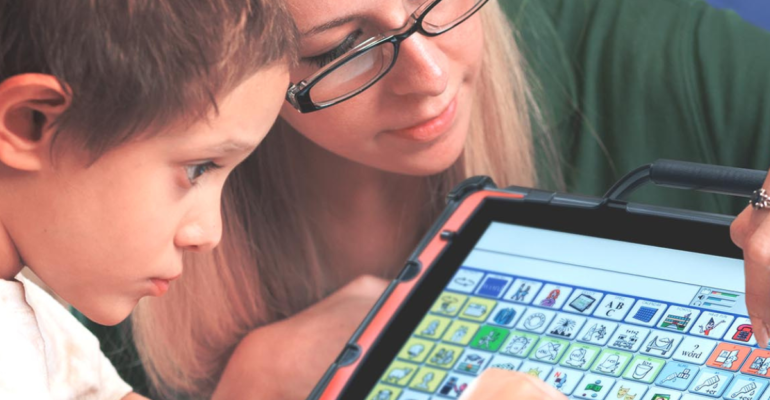Augmentative Alternative Communication: Systems to Help Support Your Child
March 4, 2019 2023-08-18 20:24Augmentative Alternative Communication: Systems to Help Support Your Child
Augmentative Alternative Communication: Systems to Help Support Your Child
Augmentative Alternative Communication: Systems to Help Support Your Child
Communication is a gift that can easily be taken for granted, and contains much more than simply expressing one’s basic needs. It’s also how people learn about one another, share our thoughts and desires, as well as how we experience all the intricacies of life together. But for children with Autism Spectrum Disorder, the communication skills that others may not think twice about can be something much more difficult, and thus they need more help.
Augmentative Alternative Communication, or AAC, provides the alternative for verbal communication. Forms of these can include gestures, facial expressions, body language, writing, sign language, and more. There are different levels at which these may be used — some may use one or more of these forms exclusively, while others may use some words while relying on AAC for longer conversations or encounters with strangers.
Whatever the usage may be, it is useful both for those with speech or language issues and those who interact with them. Three particular systems designed to help children with speech/language disabilities are as follows:
- PECS (Picture Exchange Communications System). The goal of this system is to teach children a self-initiating, functional way to communicate. With six phases, one begins with the use of picture icons to build into sentence formation and then would give the picture to their communicative partner (teacher, therapist, parent, friend) to honor as a request. As you move through the phases, the pictures are put together to form sentences. Most pictures can be created by using magazines, taking pictures specific to a child’s environment, or printing them off of the internet, making this a cost-effective option. This system works well in both school and clinic settings as well as at home, and many children using this system have moved on to become verbal or move to using a voice output system.
- Sign Language. This system, using visual gestures and signs, can augment or provide an alternative to speech. For some users, this can provide a first step for spoken language development, while others may continue to rely on it as a primary means for communication. If chosen as the primary AAC system for a child, it’s important that any and all communication partners learn sign language as well to reinforce learning.
- Communication Devices. Low and high-tech communications are another form of aid, using a kind of tool or device. For low-tech, or basic, aided systems one could need as little as a pen and paper, or to point to words or pictures. Using a computer screen to point or type, or having a device that can speak for someone, would be a high-tech communication system. Some speech-generating devices can even speak in different languages. Choosing between low and high tech aid comes down to what works best for the needs of the individual, not which system is “better”.
If you’re concerned about the language development of your child, suspect a need for intervention, or simply desire to understand more about AAC, get in touch with our team at [email protected] today to learn more!
REFERENCES:
https://pecsusa.com/pecs/
https://www.asha.org/public/speech/disorders/aac/
https://www.communicationmatters.org.uk/page/what-is-aac
https://www.asha.org/njc/aac/











